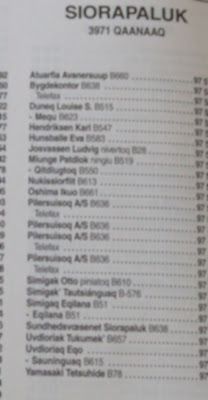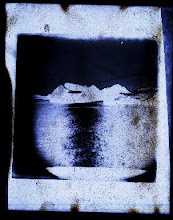Hamborgerland, however unmodern in name, is timeless in rugged yet peaceful beauty. It was my first encounter with glaciers, tumbling like frosting through the bundt peaks rising up on either side of us. Breakfast over, tourists tumbled onto the decks to enjoy the spectacle - which inevitably means the frantic urge to preserve the moment in photographs. (I of course was doing more of this than anyone, although it was my raison d’etre.) An Italian couple asked me to take their portrait against the backdrop of peaks. I was, as always, happy to oblige, and then the man offered to take a photo of me. (This is not the photo I’m using on my contest entry page http://www.blogyourwaytothenorthpole.com/entries/166, which is a self-portrait, but another image slipped in amongst my 35mm contact sheets.) I wondered what other tourists might make of the scenery. As the sun rose higher it became increasingly warm, and people took over every available sun lounger. I really couldn’t get over the idea of Italians travelling to the Arctic Circle, to sit and catch the rays as if at a beach on the Venetian Lagoon.
30 August 2008 10:04 recalled 18 January 2011
Want more? Then please VOTE FOR ME TO BE THE OFFICIAL BLOGGER & ARTIST ON AN EXPEDITION TO THE NORTH POLE! http://www.blogyourwaytothenorthpole.com/entries/166
send an image of ULTIMATE STILLNESS to my exhibition http://www.wooloo.org/open-call/entry/182907
then lope over to my Greenland blog http://margaretsharrowgreenland.blogspot.com/
and stay tuned for another episode tomorrow!





